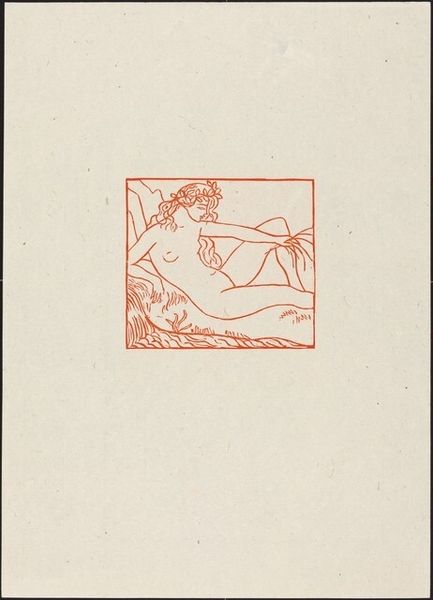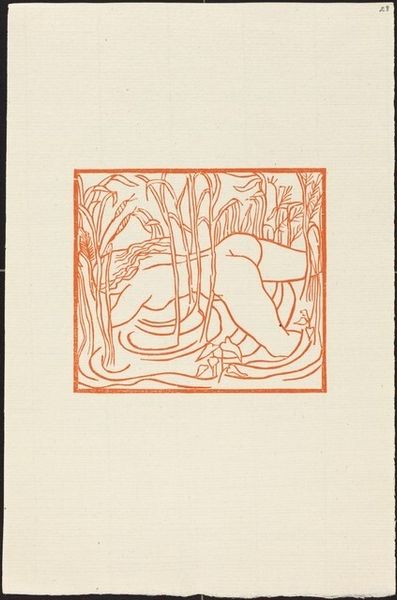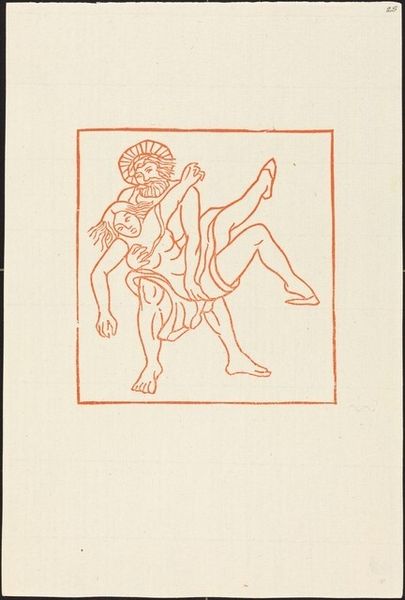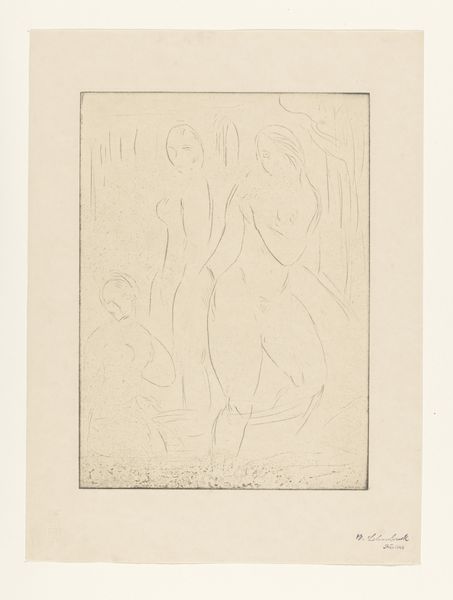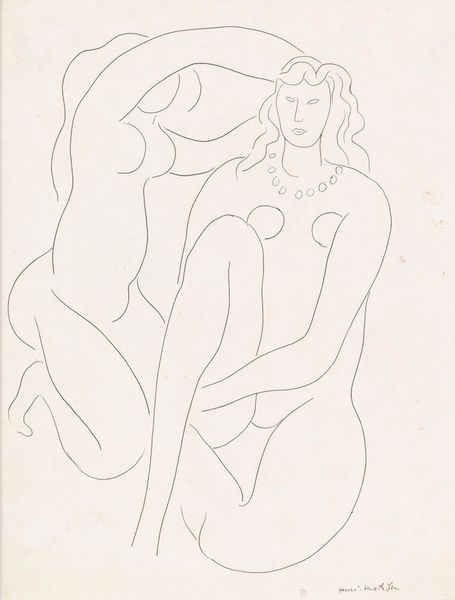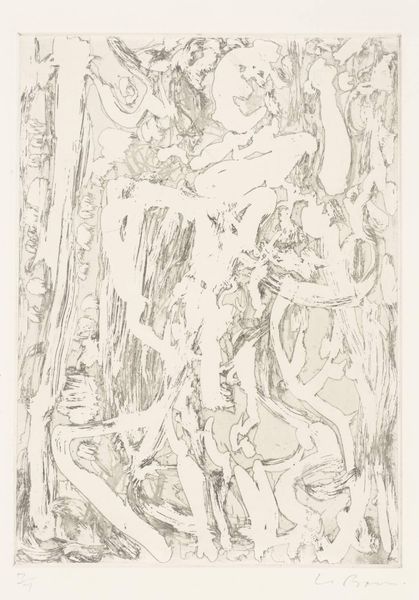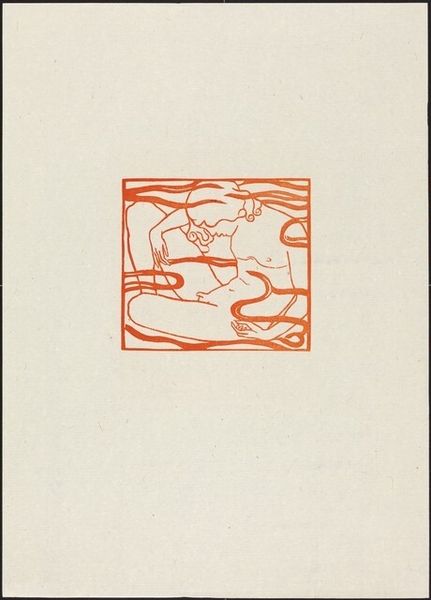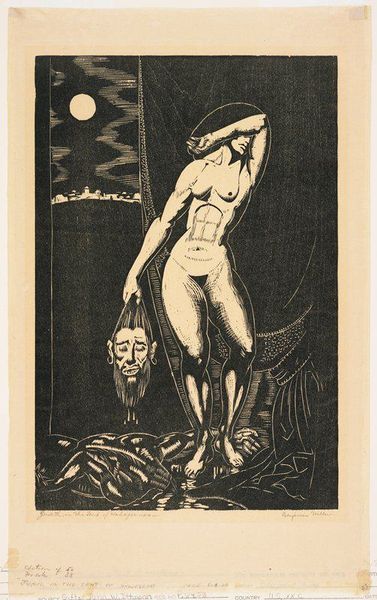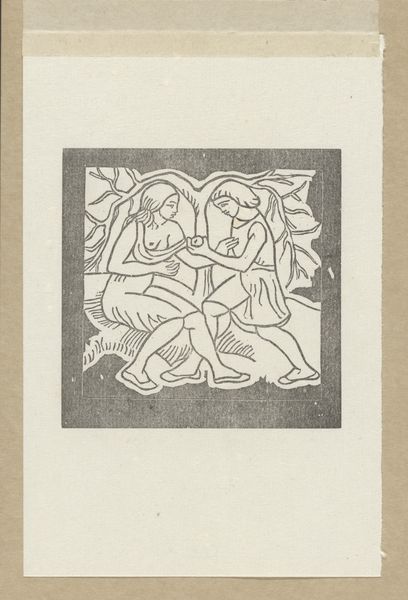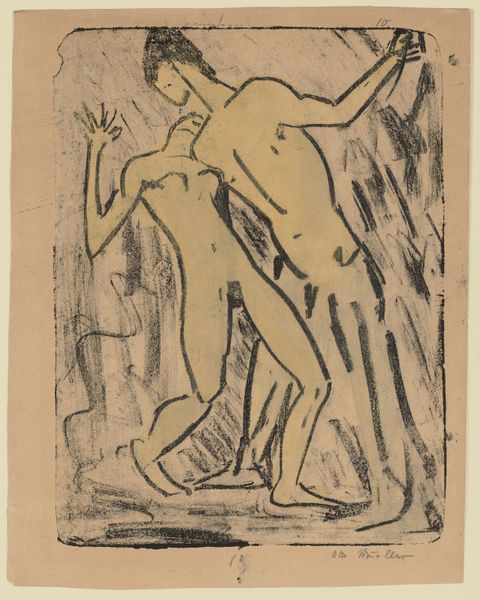
Third Book: The Echo, Daughter of a Nymph (La nymphe Echo) Possibly 1937
0:00
0:00
Copyright: National Gallery of Art: CC0 1.0
Curator: Aristide Maillol created this linocut print, titled "Third Book: The Echo, Daughter of a Nymph," possibly in 1937. The print shows a nude figure set against a simple landscape backdrop. Editor: Gosh, the first thing that hits me is how intensely vulnerable that figure feels. The linework is so economical, yet it captures a raw emotional state – almost as if the landscape itself is echoing her vulnerability, wouldn't you say? Curator: Absolutely. We need to consider the story of Echo, of course. The nymph, punished by Hera and only able to repeat the words of others, trapped and silenced. This visual representation becomes incredibly poignant in the context of gender and power dynamics, no? The body, unclothed and exposed, underscores a historical vulnerability and lack of agency. Editor: Yes, the way her hands are positioned, almost like a shield in front of her face. Is she shielding herself, or is it more of a gesture of frustration? The simplicity of the linework emphasizes the gesture. It's like a primal scream caught in a gentle medium. Curator: The "primal scream," yes! It's a really interesting interpretation, linking the visual language to contemporary anxieties around voice and visibility. Maillol was part of a generation grappling with modernity and societal upheaval, themes reflected here in his choice of subject matter and stark visual style. He captures the struggle between beauty and the inherent constraints imposed upon it, particularly within the female experience. Editor: It's fascinating to think about how much depth of feeling can be communicated with such minimalist choices. The deliberate use of a single colour creates a powerful effect that keeps bringing me back. It allows your eye to circle back to the emotions felt by the figure. Curator: Exactly. We can unpack complex layers of meaning—gender, history, the power of myth, even silence—simply through these economical lines. Maillol, even with a seeming simple execution, urges us to recognize these threads. Editor: And it reminds us that even in the sparsest of artistic expressions, there is immense room for both feeling and interpretation, creating space for ongoing dialogue between past and present, artist and audience. Curator: Precisely. It's a conversation—or rather, an echo—continuing to resonate.
Comments
No comments
Be the first to comment and join the conversation on the ultimate creative platform.
